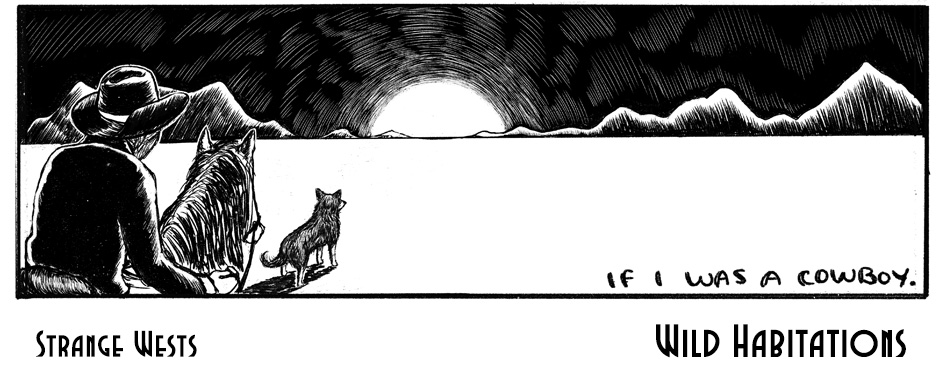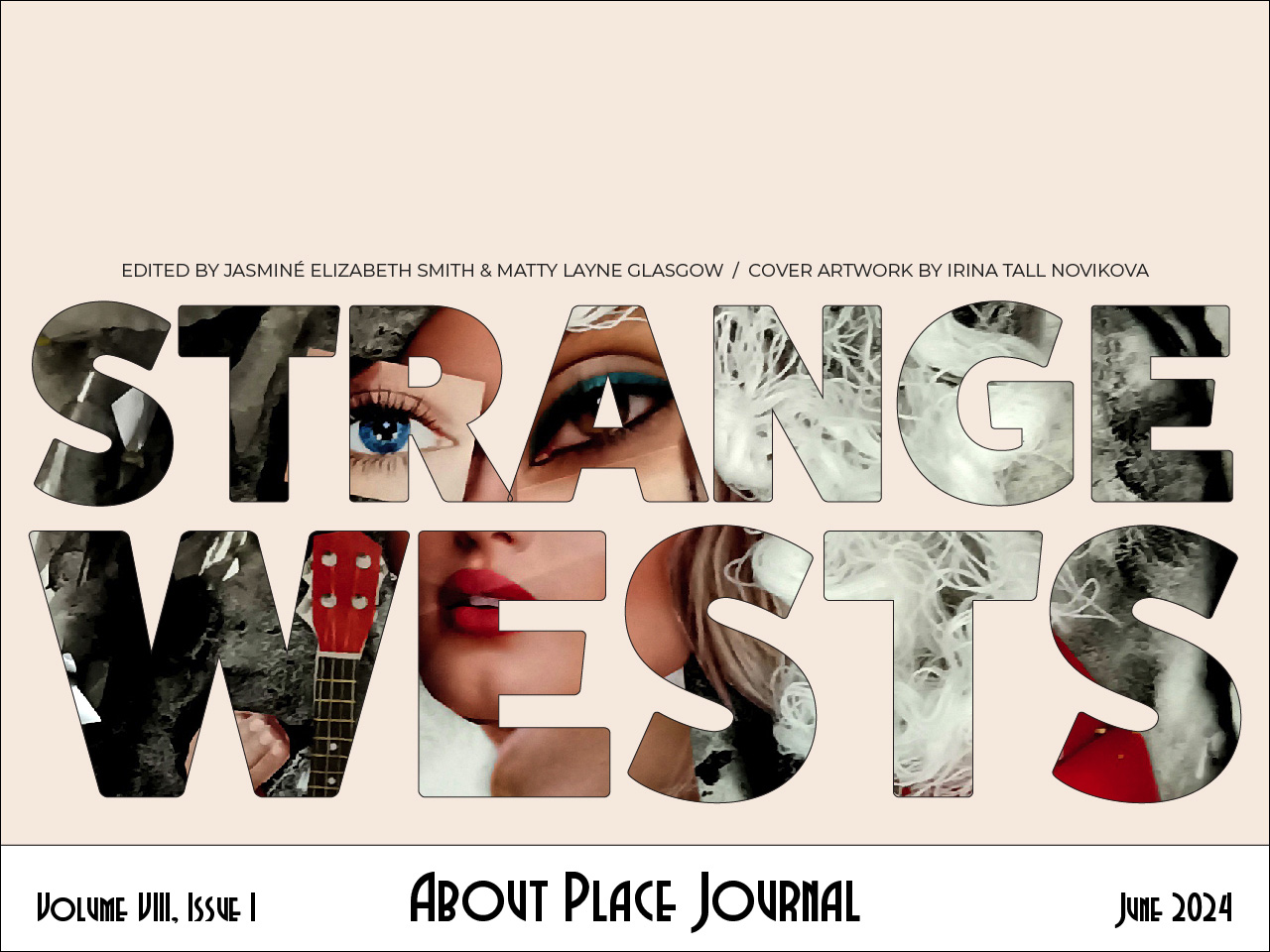West is irony. A cardinal direction becomes a bird’s crimson feathers chasing the fading light of the sun. Or that bird becomes a place, a way of seeing the world. If we look in their direction, are we there? Do we know them: the bird, the place, dusk? When we began planning this issue, one of the questions we considered was If this is West, what is center? The center of a binary is where two opposing ideas meet. Consider wilderness. Consider habitation. In this section, those ideas coexist. Our understanding of space grows through a reverence for the biotic and abiotic alike. Rivers that have long-carved red rock into sheer canyon walls. Gnarled junipers, their scent washing down from Little San Bernardino. A landscape ripe with coyote and creosote. A pile of sidewalks. A human speaking to a dead tree, pixels and ink looped on her body—a story in mimicry. We render an idea as we experience it or imagine it, and there are many ways of being in the West.
West is ornery, playful. A man becomes a bear in the woods, his sack heavy with seed. A prickly pear cactus arises as the prettiest queer around, a site of sonic pleasures and collaboration. This section teems with an alluring irreverence, an excess, and even a campiness that offers a multiplicity of tones as we navigate the internal and external wildness of our lives. We are embodied in this space in all that we touch and see and hear, and yet, there persists a certain awareness, a snark, a queering of tradition. The forest begs a man to come, and he does. A daughter returns home for a funeral, and thanks a dead sparrow and a nosy aunt, alike, for coming. In the slant of all this western light, the eyes draw in many images simultaneously. Whether the interior of a rose is all curled petal, a skirt billowing, or both at once, the poet wears it, pirouetting into / this, the center, / the end of worlds.
With love and camp,
Matty


